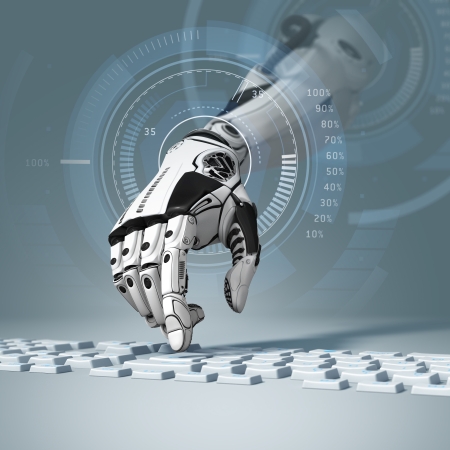Do you fear the coming robot revolution?
Many folks sure do. They’re worried that robots will take our jobs…and disrupt society’s fragile balance.
But I, for one, welcome our new robot overlords.
I’m holding a phone made by a series of robots in Shenzhen, China.
I drive a car built by robots in Le Mans, France.
I’m looking through glasses made by robots in Agordo, Italy.
Just about every manufactured good these days has a robot component in its production cycle.
And are we better off for it?
For me, that’s a definitive YES.
Through the application of manufacturing robots, consumers like you and I can enjoy goods at a lower cost and a higher quality.
Where robots go wrong…
In the financial world, we’ve seen robots gain a serious foothold.
We trust lines of code to make financial decisions for us…and this happens at a colossal rate. In fact, the National Business Review estimates that computer algorithms are responsible for over 50% of all trades made in America.
We call these ‘quant-based trading systems’.
They’re cleverly written programs that pick up on market movements and can isolate pockets of opportunity. They can even automatically make thousands of trades in milliseconds.
We have a few analysts in our network that specialise in this sort of trading…and have found it to provide fantastic returns.
But there’s a problem.
When everyone is using the same program, they’re all vying for the same opportunities. And instead of a couple of traders profiting off an isolated opportunity, you see millions of users all following the same pattern. This can result in sharp ups and downs.
It’s like if you were sitting at the park, throwing breadcrumbs to a flock of kererū.
At the beginning, when there are only a few birds, each one might get a few crumbs…leaving them all plump and happy.
But once more birds start showing up, you’ll see five or six skipping over to the same crumb…fighting…and most leaving hungry.
Now multiply that scenario times a million.
A million kererū.
Each time you chuck a breadcrumb, a couple of hundred thousand birds all dive-bomb towards it.
That’s how today’s market works.
These quant-based systems — specifically ‘high-frequency trading’ systems — direct unimaginable numbers of dollars to tiny pockets of opportunity. When the window closes, everyone hurtles towards the next opportunity. [openx slug=inpost]
On the flip side, these systems also react to threats.
When there’s a significant sell-off of a stock, many of these auto-systems sell too…sparking a snowball effect.
And according to Richard Patterson of the National Business Review, that’s why we’ve been seeing a sharp downturn in the past week or so…and a quick rebound…without any sign of an obvious catalyst.
I tend to agree.
These high-frequency trading systems — combined with passively managed index funds — create a perfect storm of robots, algorithms and herd mentality.
It means that people are more or less out of the picture…and that programs dictate market sways.
In other words, the captain has turned on autopilot. And as passengers, you and I are strapped in for wherever the plane takes us.
That’s why robots in the financial world might not be such a good thing.
A financial ‘Dead Hand’
Some of our older readers will remember, during the Cold War, Russia designed an automatic fail-safe system that would ensure mutual destruction in case the USSR was ever attacked with a nuke.
Soviets called it the Perimetr; we know it as ‘Dead Hand’.
The system comprised a massive network of missile silos, each one containing intercontinental ballistic missiles.
If the system’s sensors detected the right mix of seismic, light, radioactivity and overpressure, it would automatically fire the whole array of missiles…
…ending the world as we knew it.
Fun fact: it is possible that the Dead Hand system still exists in Russia. Other countries have developed their own systems like it. The Americans have Operation Looking Glass. The Israelis have the Samson Option. The Brits have the Letters of Last Resort. We have Tony Woodcock.
If anyone were to accidentally knock over the first domino, the whole world would be toast in a matter of minutes…
In the financial world, the quant systems fire metaphorical missiles every few milliseconds. You can see how that could set off sharp rises…and sharp declines…without human interaction.
As an investor myself, this sort of highly reactionary unmanned behaviour is alarming. It means that the game has changed…
What was once a battle of human wit, speed and critical thinking on the trading floor has become a virtual calculation in the backroom data centres.
It means that real-life investors like you and I need to figure out a new strategy to stay effective…
…to stay relevant…
…to connect the dots…
…and to make money in a robot’s world.
Best,
Taylor Kee
Editor, Money Morning New Zealand
